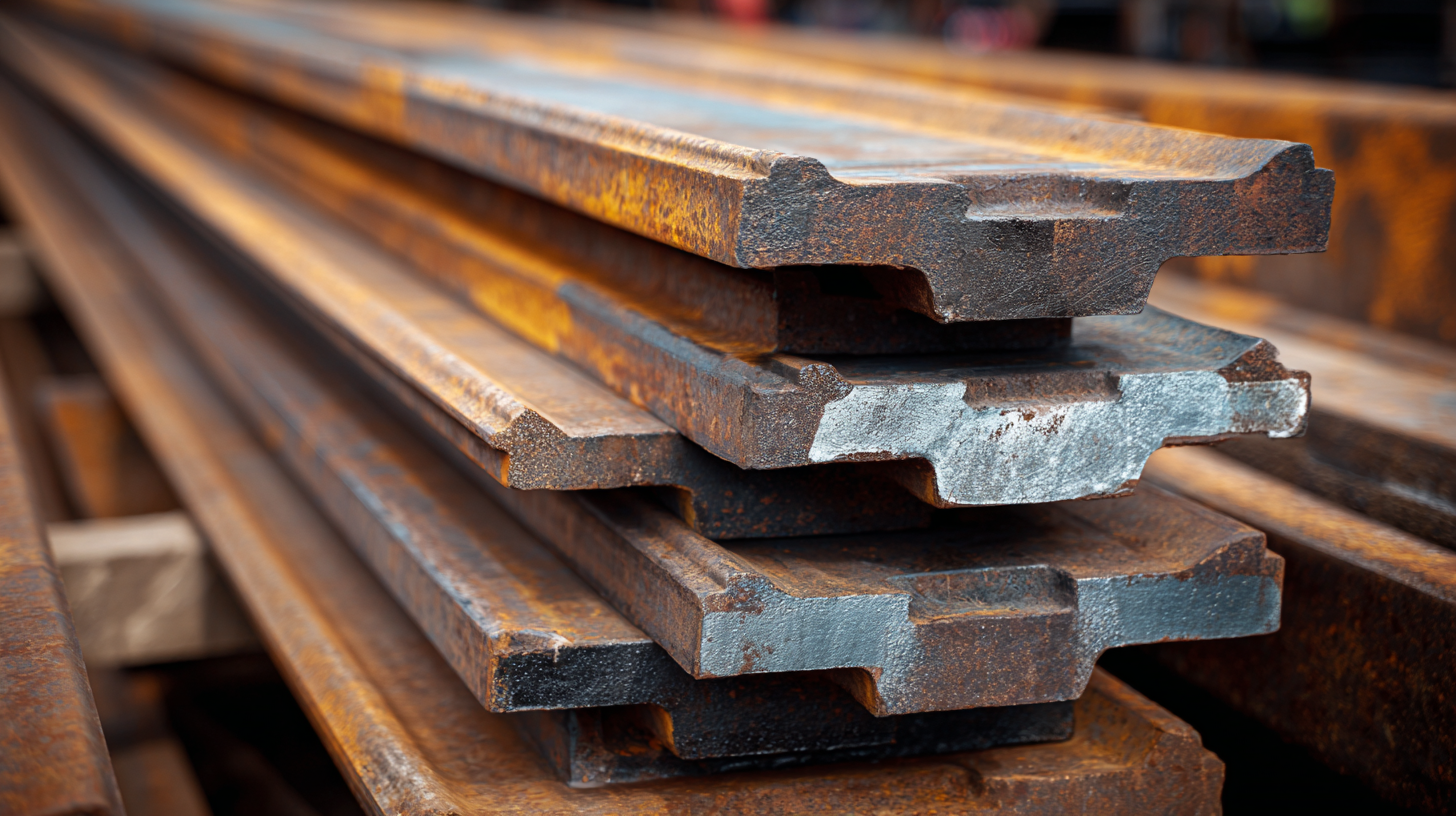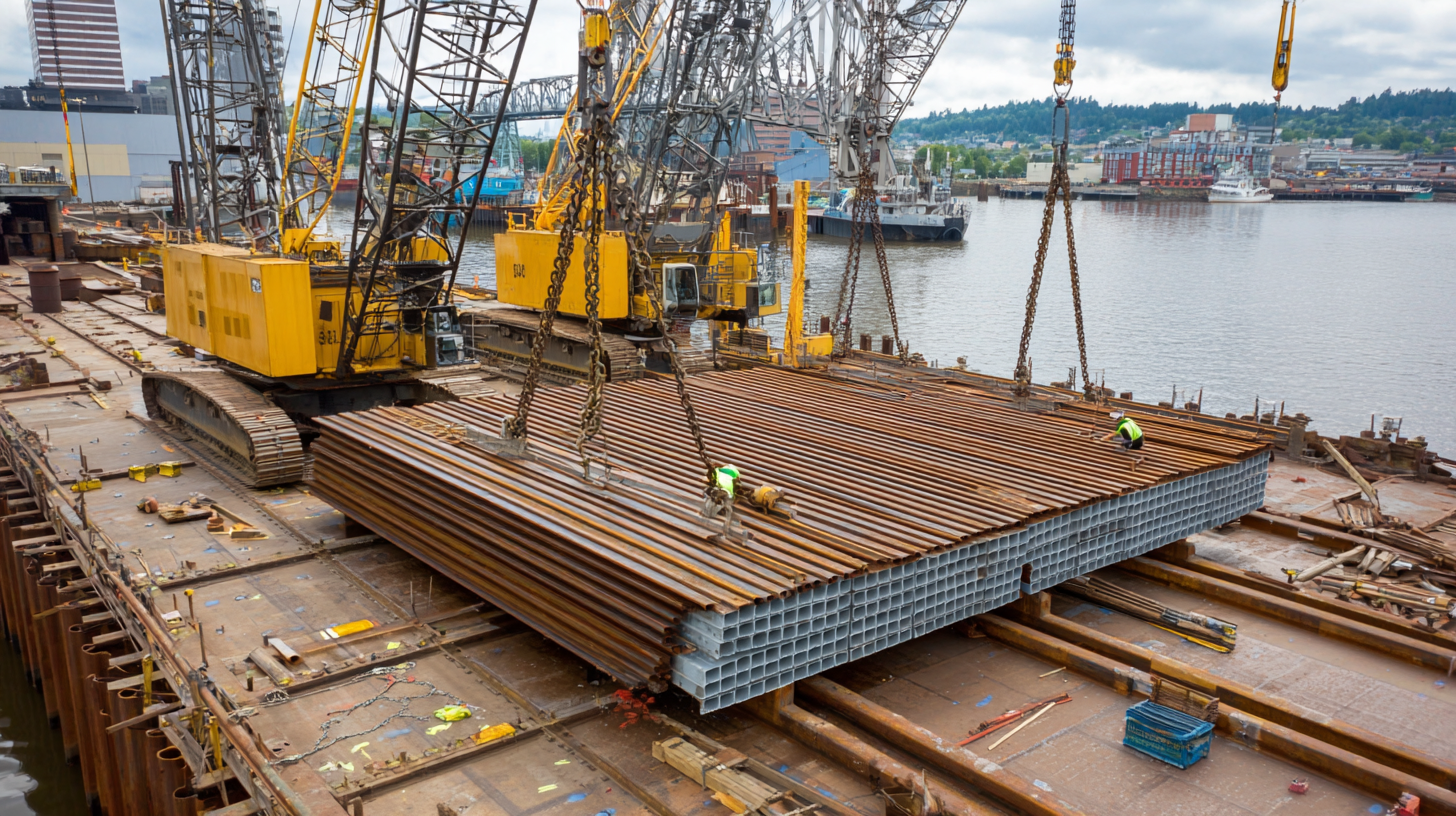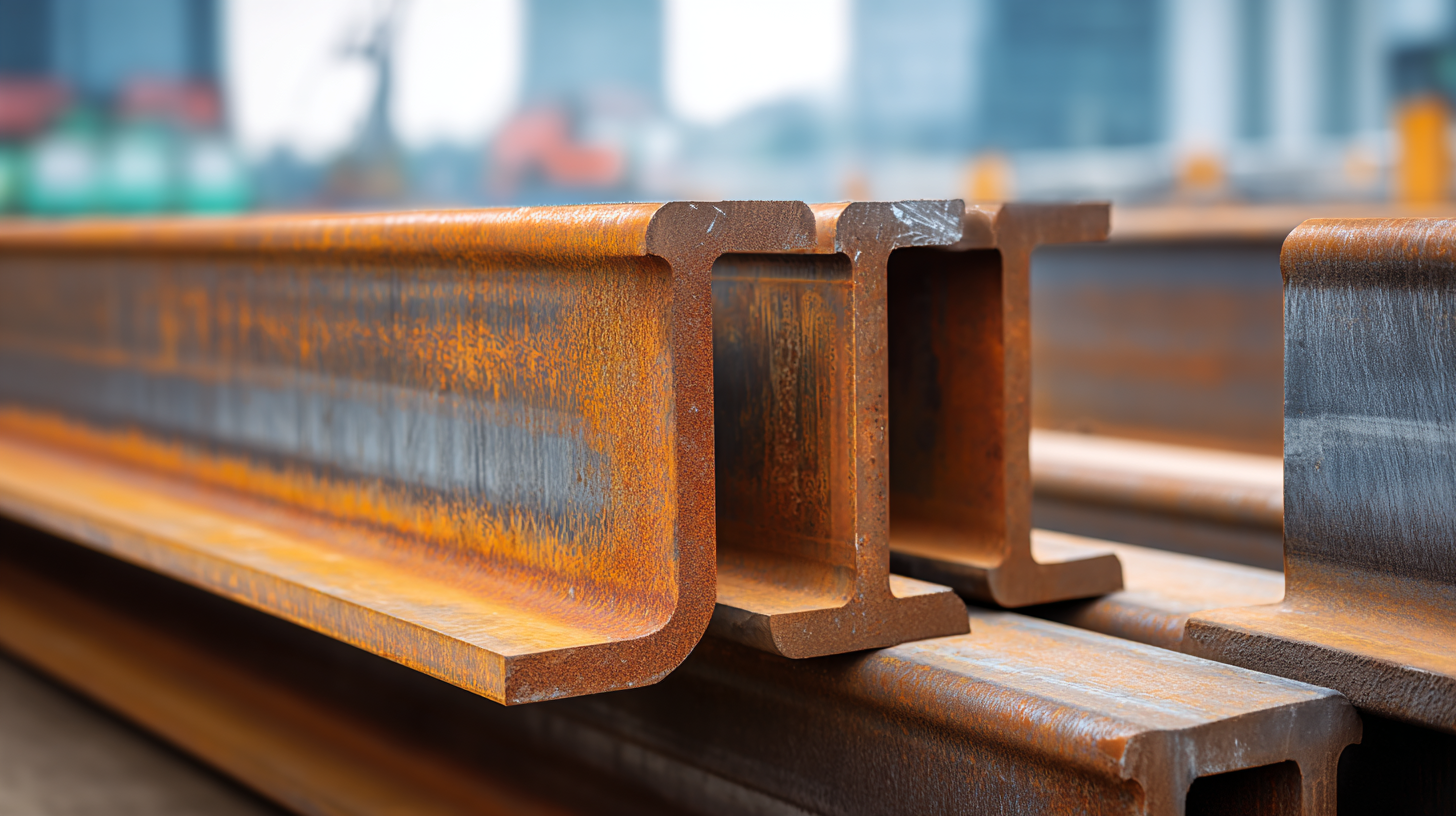In the construction industry, selecting the appropriate materials is crucial for the success and durability of projects, particularly when it comes to ground and structural support. Steel sheet piles have emerged as a favored choice in various applications, thanks to their high strength-to-weight ratio and long service life. According to a report by the Global Steel Sheet Pile Market, the sector is expected to witness significant growth, with a projected CAGR of 7.2% through 2025, driven by increased investment in infrastructure and environmental projects. Additionally, the versatility of steel sheet piles allows for effective solutions in diverse conditions, from waterfront structures to waste containment systems. However, the key to maximizing their benefits lies in understanding the specific requirements of your project and choosing the right type of steel sheet pile that aligns with these needs. This guide will provide insights into how to navigate the selection process effectively.

When selecting the right steel sheet pile for your construction project, it's essential to understand the various types available and their corresponding applications. Steel sheet piles can be classified into several categories, including hot-rolled and cold-formed steel piles, each offering unique advantages depending on the construction needs. The Europe Steel Piling Market has shown promising growth, projected at a CAGR of 3.45%, indicating a robust demand for diverse piling solutions in various projects.
Different applications require specific types of sheet piles. For instance, unidirectional glass fiber reinforced polymer (GFRP) corrugated sandwich sheet piles have been modeled to analyze their failure mechanisms under bending and compression, showcasing their potential in specific construction environments where traditional steel might falter.
Additionally, insights from the global solar pile market—valued at $560.04 million in 2024 and expected to reach $1.33 billion by 2032—reflect the increasing investment in innovative and sustainable piling solutions, particularly relevant for projects focusing on renewable energy infrastructures. By understanding these dynamics, project managers can make informed decisions about the optimal sheet pile for their specific construction requirements.
When selecting the right steel sheet pile for construction projects, understanding the project's specific requirements is crucial, particularly regarding load-bearing capacity and depth considerations. Load-bearing capacity directly influences the structural integrity of the project, especially in areas with soft soil where advanced materials are necessary to ensure stability. Recent studies highlight that utilizing innovative lightweight materials can be effective for constructing embankments on weak soil, showcasing how modern techniques can enhance performance while meeting structural demands.

Depth considerations also play a pivotal role in selecting steel sheet piles. Proper evaluation of subsurface soil conditions, facilitated by advancements in geospatial analysis and machine learning, allows for more accurate predictions of soil behavior under load. This not only optimizes material selection but also improves overall project reliability. Reports indicate that effective implementation of these analyses can lead to significant improvements in supply chain management for construction materials, ensuring that projects are delivered on time without compromising quality. Thus, integrating these advanced methodologies into the selection process of steel sheet piles proves beneficial in achieving sustainable and successful construction outcomes.
When selecting the appropriate steel sheet pile for a construction project, assessing environmental factors such as corrosion resistance and soil compatibility is crucial. Corrosion resistance is particularly important in environments where moisture, salts, or chemicals can accelerate degradation. Choosing steel with a protective coating, such as galvanized or epoxy-coated materials, can enhance longevity and reduce maintenance costs. Additionally, employing stainless steel piles in more aggressive environments ensures structural integrity over time, ultimately impacting the durability and safety of the construction.
Soil compatibility plays a significant role in determining the right type of steel sheet pile. Different soil types exert varying stresses and chemical interactions with the steel materials. Conducting a thorough geotechnical analysis helps in understanding the soil composition, pH levels, and potential contaminants. For instance, clay soils may retain moisture leading to higher corrosion risks, while sandy soils may provide better drainage and lower risk of corrosion. By aligning the selected sheet pile’s properties with the soil dynamics, construction professionals can mitigate risks and extend the lifecycle of the structure, ensuring both performance and cost-effectiveness.
| Steel Sheet Pile Type | Corrosion Resistance | Soil Compatibility | Applications |
|---|---|---|---|
| Hot-Rolled Steel | Moderate | Clay, Silt | Marine Structures, Retaining Walls |
| Cold-Formed Steel | High | Granular Soils | Bridge Foundations, Docks |
| Corrosion-Resistant Coated Steel | Very High | All Soil Types | Waterfront Projects, Industrial Applications |
| Stainless Steel | Excellent | Corrosive Soils | High-End Marine Projects, Urban Environments |
When selecting steel sheet piles for a construction project, cost analysis is crucial for achieving the right balance between quality and budget constraints. The initial expense of steel sheet piles can be significant, but overlooking their quality may lead to higher long-term costs due to maintenance, repairs, or premature failure. Assessing the overall lifecycle cost—taking into account installation, performance, and potential future replacements—can provide a clearer picture of the true value of a sheet pile solution.

Moreover, understanding the specific requirements of your project can guide your cost analysis. Factors such as soil conditions, load-bearing requirements, and environmental considerations will affect both the type of steel sheet pile needed and its associated costs. Investing in high-quality materials that meet these criteria, even if they come with a higher upfront cost, can result in savings down the line by reducing the likelihood of costly interventions. Through careful evaluation and prioritization of both budget and quality, stakeholders can make informed decisions that support the project's success without compromising integrity or safety.
When selecting steel sheet piles for your construction project, sourcing and supplier considerations play a crucial role in ensuring the reliability and sustainability of materials. Start by researching suppliers who specialize in steel products and have a proven track record of meeting industry standards. Look for companies that prioritize quality assurance processes, as this will significantly impact the performance and longevity of the steel sheet piles used in your project.
In today's market, sustainability is more important than ever. Opt for suppliers who demonstrate a commitment to environmentally responsible practices, such as sourcing recycled materials and employing energy-efficient manufacturing processes. This not only aids in reducing the overall carbon footprint of your project but also aligns with global sustainability goals. Engaging with suppliers who focus on the lifecycle of their products can help you make informed decisions that benefit both the environment and your construction timeline.
